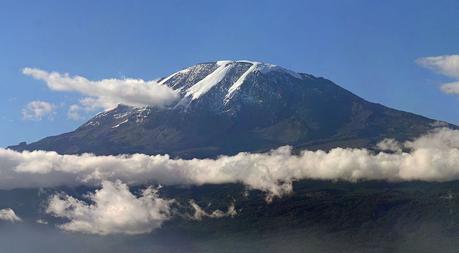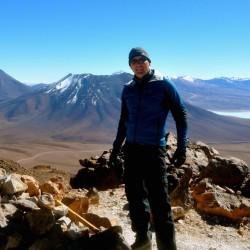As the highest peak in Africa, Mt. Kilimanjaro has been a popular destination for adventure travelers for decades. Located in Tanzania, the extinct volcano rises some 19,341 feet (5895 meters) in height, although its nontechnical ascent make it an appreciable climb for anyone in reasonably good health and the determination to trek upwards through the thin air.
Because it is more of a strenuous hike than an actual exercise in mountaineering, it is estimated that Kilimanjaro draws around 35,000 people (pre-pandemic) on an annual basis. That can lead to some very busy hiking trails, particularly along Kili's most popular and approachable routes. In an effort to shift some of that traffic elsewhere, a team of highly experienced Nepali guides recently opened a new route to the summit. Now, they hope to use that route to lead trekkers to the "Roof of Africa."

A Sherpa Legend
The lead climber on the exploratory expedition to the summit of Mt. Kilimanjaro was none other than Dawa Steven Sherpa, the CEO of Asian Trekking. The company leads expeditions on Ama Dablam, Manaslu, and Everest-a mountain that Dawa has summited on three separate occasions. He has also successfully climbed Lhotse, Cho Oyu, Manaslu, Kangchenjunga, and Pumor as well.
While Dawa is known as an experienced climber and successful businessman, he is also a staunch environmentalist. At home in Nepal, he has worked to organize efforts to clean up some of the tallest peaks in the Himalaya, including Everest. His Eco-Everest expeditions have removed several tons of trash from the mountain, making it a cleaner environment for the current generation of alpinists and those to come.
Dawa has also witnessed first hand the impact of climate change on the Himalaya and saw the same impact it was having on Kilimanjaro too. Located just off the Equator, the African peak has seen 90% of the glaciers on its summit vanish in recent years due to warming temperatures.

A New Route to the Top
The Sherpa guide brought all of his climbing experience and respect for the environment with him to Tanzania as he went in search of a new route to the summit. After examining maps and image of the mountain, he spotted what looked like a potential option located along Kili's southern flank. To see if the trail was actually viable however, he had to travel to Africa-brining several other Sherpa guides with him-to explore the route further.
In mid-August, Dawa and his team set out from the village of Kidia to see what they could find. As is the case on Kilimanjaro, their journey started in the lowlands, passing through pastoral farmland. As they made their way up, the group-which also consisted of experienced Tanzanian rangers and porters-passed through cloud forests, moors, and an alpine desert not unlike those found in the Mustang region of Nepal.
On August 22, the team reached their goal of the summit, having used GPS devices to map a new path along the way. The route offers some unique challenges in the form of difficult scree fields and narrow cliffs that must carefully be navigated while en route. As with all other trails to Kilimanjaro's summit, this one connects to Stella Point before proceeding up to Uhuru Peak-the true summit. On this exploratory first ascent, Dawa let the Tanzanian rangers go ahead of his Sherpa team, allowing them to be the first to reach the top.
A New VIP Experience
Now that the new trail has been mapped, the goal is to open it to trekkers looking for a unique experience on Kili. Dawa hopes to begin leading climbers along what he calls the Kidia Route sometime in the near future. But in an effort to protect the environment and avoid overcrowding, his plan is to limit the number of hikers to no more than 20 per day. He also intends to employ more local porters and source more fresh food locally as well. The Sherpa guide admits this will result in a higher price for the trek, but he intends to offset that by offering an upscale, VIP experience.
While pricing hasn't been announced yet, the trek is expected to take about seven days to complete. That's a fairly quick climb up the mountain, although doable for those who come prepared. Keep that in mind if you're considering testing your legs and lungs on this new trail.
If you're looking for a similar experience that is already in place, Tusker offers what it calls its Spiral Route. This trek takes climbers along the seldom-visited northern section of Kilimanjaro, circumnavigating the entirety of the mountain as they go. Much of that hike is also remote and isolated, with very few other climbers as well. I made that trek back in 2015 and found it to be utterly spectacular.
Whichever route you choose for a Mt. Kilimanjaro trek, you can't go wrong. It is definitely an adventure of a lifetime and one that any traveler should have on their bucket list. Having been their twice myself, I would never rule out going back for a third time.



